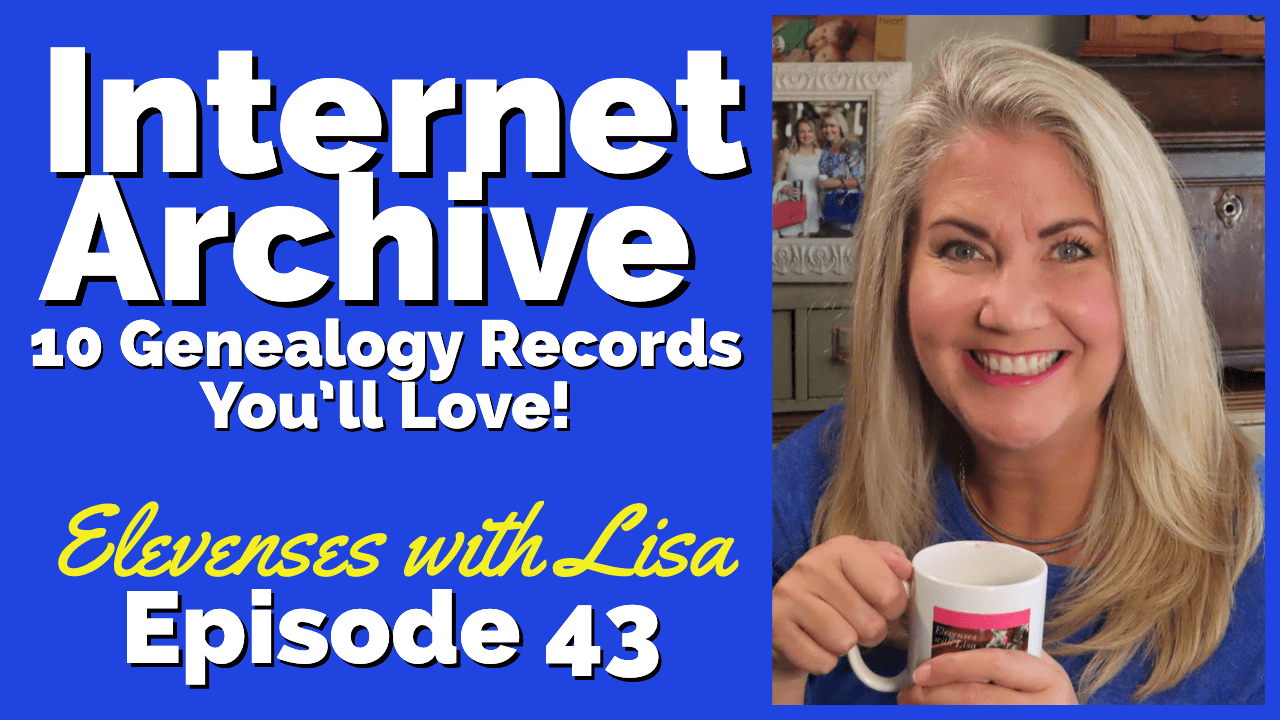Video #4 of our 25 Websites for Genealogy – Digital Collections
VIDEO & SHOW NOTES: Video #4 of our 25 Websites for Genealogy Playlist. In this video, my guest presenter Gena Philibert-Ortega covers digital collection websites that are must-haves for family history research. You’ll find plenty of genealogy gems waiting for free at websites #18 through 22.
Websites 18 through 22 of our 25 Websites for Genealogy
Some of these websites will be new to you, and others are going to be very familiar to you. In talking about the familiar websites, I want to get you thinking about them differently, explain a little bit more about what you can do at these websites, and how to get the most out of them.
In this series of 25 Websites for Genealogy, we’re going to be looking at websites in different categories. Our third category is Digital Collection websites (#18 through 22).
Download the ad-free Show Notes cheat sheet for this video here. (Premium Membership required.)
Websites #18: Digital Public Library of America
At the DPLA you can search for public domain research materials that will benefit your genealogy research. It offers a searchable access to millions of items including photographs, manuscripts, books, sounds, moving images, and more from libraries, archives, and museums around the United States.

Use filters to refine your search at DPLA
Website #19: Google Books
According to Lisa Louise Cooke, Google Books is the tool you should use every day for genealogy. It puts 25 million digitized and searchable free books at your fingertips.
Learn much more about how to get the most out of Google Books with these videos by Lisa Louise Cooke:
- Google Books – Getting Started (Premium Membership required)

Log in to watch now
- Google Books – 10 Surprising Finds
- Google Books – New Features
Website #20: FamilySearch Digital Library
https://www.familysearch.org/library/books/
The FamilySearch Digital Library includes over 500,000 genealogy books, family histories, maps, yearbooks, and more.
Website #21: Internet Archive
If you’re looking for new information about your family history, an important website to add to your research list is the Internet Archive. It’s a free website that attempts to archive the web, and that includes a vast array of genealogy materials!
Visit the dedicated Genealogy Collection page: https://archive.org/details/genealogy&tab=about
Learn much more on how to find valuable genealogical records for free with this video by Lisa Louise Cooke: Internet Archive – 10 Records You’ll Love to Find
Website #22: HathiTrust
Founded in 2008, the non-profit HathiTrust provides access to 18+ million digitized items in the HathiTrust Digital Library. Reading access varies depending on the item and whether you belong to a participating organization, but it’s definitely worth a look.
Resources:
Download the ad-free Show Notes cheat sheet for this video here. (Premium Membership required.)
Not a Premium Member yet? Discover the benefits and join today.

Click to learn more about Genealogy Gems Premium Membership.



